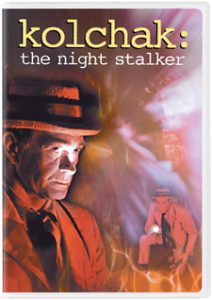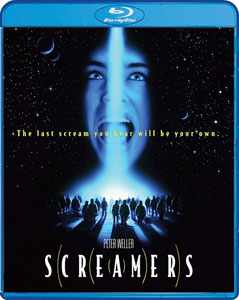Completing a trifecta of 20th century English-language Philip K. Dick adaptations – following “Blade Runner” (1982) and “Total Recall” (1990) – is “Screamers” (1995). Interestingly, all three films have an “Alien” (1979) connection: Director Ridley Scott went on to direct “Blade Runner” and co-writer Dan O’Bannon went on to write “Total Recall” and “Screamers.” He completed those screenplays in 1981 but they weren’t made into films until the next decade; perhaps if “Blade Runner” had been a commercial hit, they would’ve been made sooner.
Major influences
When following the arc of science fiction trope history, though, “Screamers’ ” big connection is “The Terminator” (1984). The source material, PKD’s short story “Second Variety” (1953) – whether by influence or coincidence – could easily serve as the backstory of Skynet’s development of the Terminator infiltrator units.
O’Bannon (who didn’t know of the film’s existence until after it was released) and co-writer Miguel Tejada-Flores, who punched up the dialog, are broadly faithful to “Second Variety.” Director Christian Duguay’s film is more convoluted at the beginning and more twisty at the end. But essentially, “Screamers” chronicles two opposing camps on a war-torn mining world – the NEB and the Alliance – who want to call a truce, as the leadership of both sides have abandoned them on this dirtball.

“Screamers” (1995)
Director: Christian Duguay
Writers: Philip K. Dick, Dan O’Bannon, Miguel Tejada-Flores
Stars: Peter Weller, Roy Dupuis, Jennifer Rubin
As Alliance leader Joe Hendricksson, “RoboCop’s” Peter Weller provides charisma that might’ve been better spread throughout the cast. Also among this caravan that’s dodging killer robots are rookie soldier Jefferson (Andrew Lauer), tough guy Becker (Roy Dupuis), fidgety Ross (Charles Powell) and headstrong Jessica (Jennifer Rubin).
In classic PKD fashion – although not precisely following from “Second Variety” – Joe and Jessica fall in love because he’s the protagonist and she’s the woman in the story. “Screamers” tries to give us a memorable ragtag gang of survivors – Dupuis in particular aims to infuse Becker with an edge – but you’ll probably forget them all.
This group of former foes has a common enemy in the Screamers, piranha-like robots that were originally created by the Alliance but now self-replicate belowground, Skynet-style. This is the First Variety of killer robots, the “claws,” from PKD’s yarn, although the film uses “type” instead of “variety.”
Early horror isn’t maintained
Early scenes show the “claws” cutting up soldiers and sucking them into the ground, giving “Screamers” a horror bent it doesn’t maintain. As the adventure continues, we see shifting sands or snow, reminding us the claws are out there, hunting.
The later varieties look human, and as such, this thriller/horror mishmash retains the paranoid heft of “Second Variety” via the questions of “Who can you trust?” and “Who is really human?”
In both Dick’s story and Duguay’s film, there’s a logic hole. Since the robots want to infiltrate the human camps, it doesn’t do them much good to construct armies of “humans” in only a few basic models. Once the humans see one “human” infiltrator of a type – for example, the teddy-bear-holding innocent boy “David” — they won’t be fooled by the next one that looks the same.

The numbered varieties do provide a fun math trick in “Second Variety,” though. (Spoiler alert for this paragraph.) The hero, Joseph Hendricks, discovers the First and Third varieties of killer robots, and then when he discovers one more, he assumes it is the Second Variety and he is safe from there on out. But it’s actually the Fourth Variety, and he has one last enemy.
It suffers from coming after ‘Blade Runner’
Maybe that numbering trick would’ve added a fun mystery angle to the film. As it stands, the ideas suffer from hitting the screen after we were well-versed in them from “Blade Runner.” The infiltrators quote classic literature and poetry, which calls to mind “Blade Runner’s” Roy Batty.
But the comparison doesn’t do “Screamers” any favors. Except for one too-late piece of information, this film doesn’t explore the notion that the infiltrators are the same as humans. We see their insides: They are machines. One could imagine they are Nexus-1s, the ancestors of the all-too-human Nexus-6 models in “Blade Runner.”
Filmed in Canada with clearly less money than the two previous PKD adaptations (as we’re reminded with every special effect and landscape matte painting), “Screamers” has no chance of rising to that level. If it had come out shortly after O’Bannon wrote it, it might be a classic; as it stands, it’s just another post-“BR,” post-“Terminator” movie to most observers. On its merits as a film, that’s a fair assessment, but PKD fans who know the source material might find “Screamers” to be an engaging curiosity.

